Hidden in the archives: Australia’s Second World War “Kelly Gang”
While working on a current project processing Second World War unit diaries, staff in the Australian War Memorial’s Research Centre came across the story of one of Australia’s most interesting companies. This company, known as the “Kelly Gang”, made a name for themselves fighting on horseback against the Vichy French in Syria during June and July 1941 as part of Operation Exporter. Their actions, from the “Gang’s” reliance upon horses to negotiate the difficult Syrian terrain, to the circumstances surrounding the capture of French horses, make the story of the Kelly Gang one that truly stands out in Australia’s Second World War history.
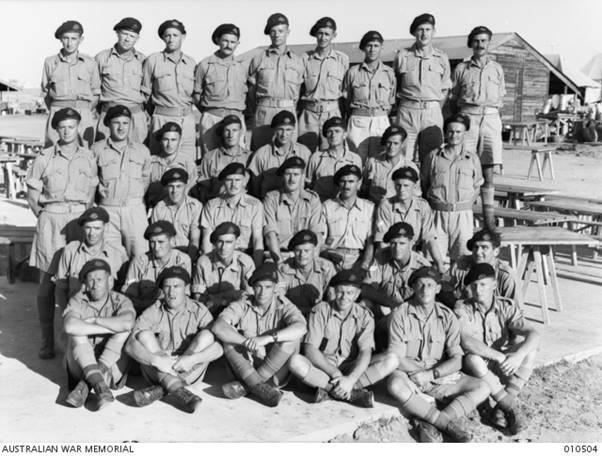
The “Kelly Gang” (C Company, 6th Australian Division Cavalry Regiment), October 1941. Frank Hurley, C31017
Phasing out of horses in Australian units
Between the two world wars there was a gradual replacement of horses in a military setting with more mechanised forms of transport. Owing to tradition, and perhaps nostalgia, many Australian units in the Second World War had gained names relating to the military’s previous reliance upon horses, such as “cavalry” and “light horse”, despite horses being used only minimally on the home front and in small areas of the Pacific.
The 6th Australian Division Cavalry Regiment
The 6th Australian Division Cavalry Regiment was one of the first to be formed by Australia following the outbreak of war in 1939. Just two months after the unit’s formation in January 1940 it was sent to the Middle East, where it would spend the next few years before returning to Australia in March 1943. The regiment would later be sent out to the Pacific theatre to participate in the Aitpae–Wewak campaign of 1945.
The regiment’s diaries from its formation to its return to Australia in 1942 had one interesting addition: many contained a group of pages from what appeared to be a scrapbook filled with photos of the unit’s activities, depicting everything from shelled towns to candid images of soldiers during their leisure time.
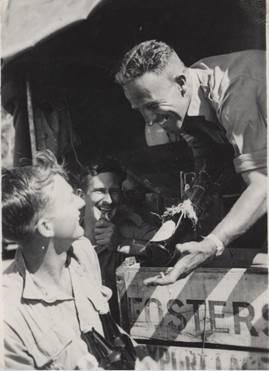
The 6th Australian Division Cavalry Regiment provided its own “mobile canteen” throughout the campaign – unit diary, July 1941. AWM52 2/2/7/14
In 1923 the French Mandate for Syria and the Lebanon was ratified by the League of Nations, effectively making Syria a French protectorate until such time as it was deemed able to function as an independent country. With the fall of France to German forces in 1940, Syria came to be controlled by Vichy France, and in April 1941 a pro-Axis coup occurred in Iraq, forcing the allies to intervene. With the loss of Crete to the Axis that May the position of the Allies in the eastern Mediterranean began to look precarious. Fearing an Axis attempt to occupy Syria or use its airfields, the Allies decided that only by invading Syria could they remove this threat to Egypt and the vital Suez Canal. As a result, Allied troops, complete with a large Australian contingent, were sent to Syria to remove the Vichy forces and regain the territory for the Allies. This is where the 6th Australian Division Cavalry Regiment began to play its part.
On 8 June the regiment first entered Syria, comprising three squadrons: A, B, and C. Each squadron was made up of a small number of light tanks, some armoured infantry carriers (similar to Bren gun carriers) and a handful of motorised transports. During the first two weeks of the Syrian campaign the regiment suffered moderate losses to their light tanks and carriers, both from enemy action and mechanical breakdown. It lacked flanking cover along the important Benays–Merdjayoun road, and as a result became vulnerable to fire from enemy cavalry or infantry. The losses were such that it was no longer possible to field three squadrons. The solution was to give the remaining vehicles of C Squadron to B Squadron, and find alternative transport for C Squadron. A solution came in the form of a horse-mounted cavalry formation under the supervision of Brigadier F.H. Berryman. British troops had already placed such an example, the mounted Cheshire Yeomanry, to the west of the 6th Australian Division Cavalry Regiment, maintaining contact with the coast.
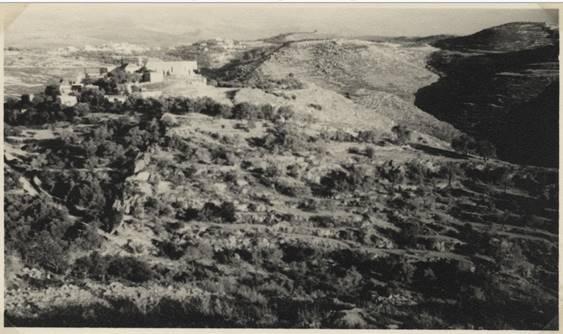
“Difficult terrain in which the “Kelly Gang” operated in” – unit diary, June 1941. AWM52 2/2/7/13
The “Kelly Gang”
The first problem faced by Berryman was finding horses. A week prior to the formation, the 2/33rd Australian Infantry Battalion had been involved in an action against some squadrons of the Vichy French Circassian cavalry at Rachaya el Fokhar. When a group of 200 French cavalrymen were spotted along the track to Rachaya, Australian troops were ordered to fix bayonets. The enemy retreated, with some 50 French soldiers killed and 32 French cavalry horses were captured. The horses were all of excellent stock, being fine Arab stallions apparently trained for battle.
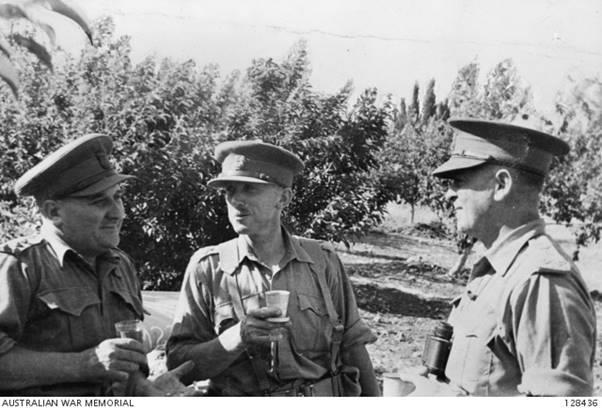
From left: Major General A.S. Allen, Brigadier F.H. Berryman , and Brigadier A.R. Baxter-Cox enjoy a moment of respite in Syria, June 1941. C48379
An attack on Ibeles Saki was planned for 23 June, and Brigadier Berryman called for a group of volunteers from C Squadron to form a mounted troop. The 6th Australian Division Cavalry Regiment was formed largely from country centres, and many of its men had fathers who had served as light horsemen in the First World War. It was therefore no surprise that Berryman quickly gained a large number of volunteers. When considering this group of country boys riding through rugged terrain, it made sense when the troop was given the unofficial nickname “the Kelly Gang”, and the War Diaries referred to them as such from their formation on 22 June.
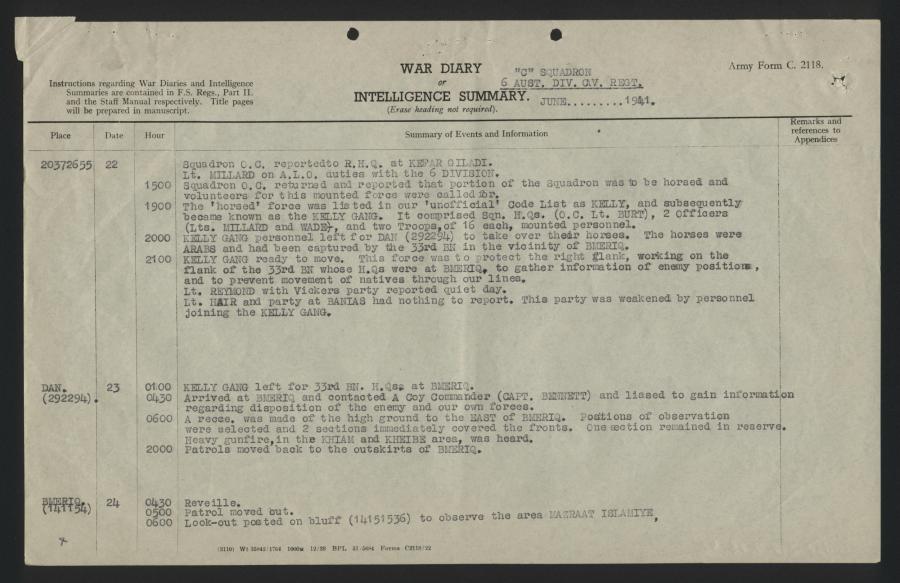
The 6th Australian Division Cavalry Regiment’s diary entry mentions the formation of the “Kelly Gang” – unit diary, June 1941. AWM52 2/2/7/13
Originally the troop contained only 18 soldiers, but this number was soon enlarged to 40 as several other horses were obtained from various other sources. The “gang” was led by Lieutenant John Burt (a dairy farmer in civil life), with Lieutenants Arthur Millard and Colin Wade each heading two sections of 16. The whole troop was very makeshift. The regimental cook, Sergeant Walter Esler, became the troop sergeant major, Sergeant Mechanic John Wood was the troop’s farrier, gunner Lance Corporal Jack James became saddler, and Trooper Allan Bell became the unit’s veterinarian. The men found their captured French saddles uncomfortable, but when seeking out replacements from the nearby British cavalry regiment, the North Somerset Yeomanry, Lieutenant Burt was turned away and escorted from their lines. It was only a plea to a senior officer that got him noticed and saw the appropriate supplies obtained.
The Kelly Gang’s mentions in the unit diaries speak largely of reconnaissance work on terrain that could not withstand cars, let alone the tracked vehicles that these men were trained to use. On at least one occasion the gang was sent into the heavily French-occupied town of Kafr Shebaa in the Bmeriq area, where valuable information on enemy positions was promptly passed on to Australian artillery. By 24 June the strategically important Merdjayoun area (modern-day Lebanon) had been taken by Allied troops, and on 3 July the Kelly Gang was relieved by the British North Somerset Yeomanry – the same unit that had earlier refused to help them out. On at least three occasions the troop came under heavy fire, yet escaped largely unscathed.
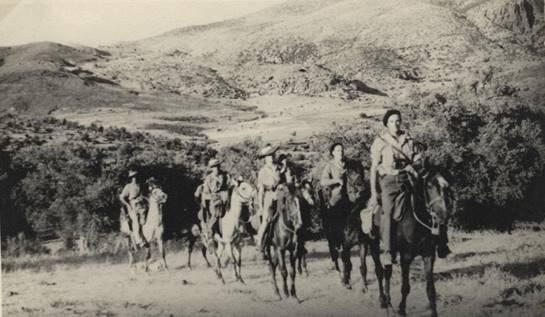
“The ‘Kelly Gang’ in the Bmeriq area” – unit diary, June 1941. AWM52 2/2/7/13
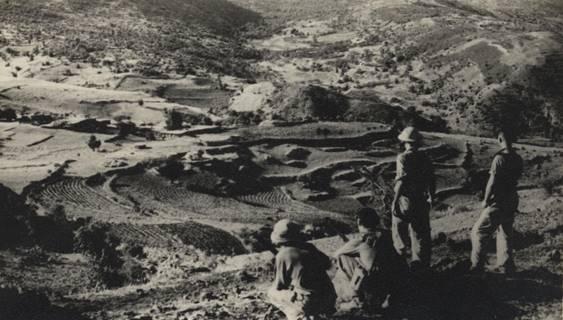
“The ‘Kellys’ look down on the village” – unit diary, June 1941. AWM52 2/2/7/13
Following the important work that the Kelly Gang played in the capture of Merdjayoun, the troop’s importance in gaining intelligence of the Syrian terrain was realised, and it was reallocated to A Squadron, based along Syria’s coast at Kafr Badda (modern-day Lebanon). This was a trek of some 115 kilometres through terrain that was worse than the unit had yet encountered. There were several times where the troop came under machine-gun fire; soldiers reported that their French mounts barely flinched, and were in some cases braver than the men themselves.
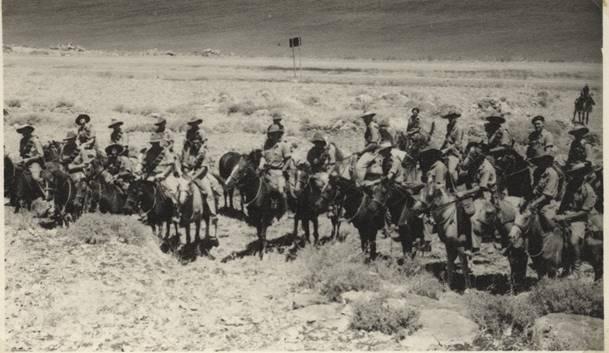
“The ‘Kelly Gang’ after their long ride from Bmeriq to the coast” – unit diary, July 1941. AWM52 2/2/7/14
On 9 July the Kelly Gang completed its biggest achievement. While out on morning patrol, scouts spotted the position of an enemy battery at Ain El Hour whose guns were firing on a large contingent of advancing Allied infantry . To silence the enemy battery, members of the Kelly Gang escorted a small group of artillery to set up an observation point. The battery was soon silenced, allowing the Allied forces to continue their advance.
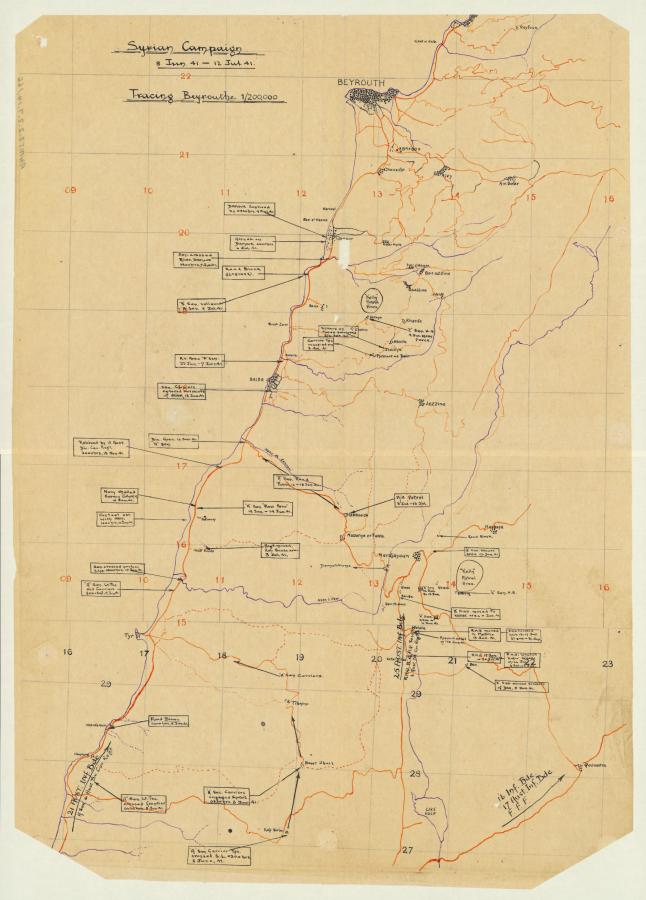
A map of part of the Syrian campaign, with the “Kelly Patrol Areas” circled – unit diary, July 1941. AWM52 2/2/7/14
On 13 July 1941 the Syrian operations drew to a close, with Allied success. While it was in operation for only three weeks, the Kelly Gang’s heroic and innovative use of cavalry and the resources available to them gave them a unique Australian experience of the Second World War. Just as the famous Australian Light Horse brigades had ridden into Damascus in 1918, the Kelly Gang, many of whom were sons of those light horsemen, could safely say that they too had played a significant role in the successful capture of Syria.
The story of the Kelly Gang is just one of many wartime experiences that are likely to be uncovered in the three-year process of digitising these Second World War unit diaries. It was, however, through the addition of photographs and the unit’s iconic nickname that the Kelly Gang’s story was able to come to light once again.
War diaries
War diaries are a record of a unit’s actions, filled out by the commanding officer, generally on a daily basis. These files act as a primary record of what a unit did and where it was on a given day. As well as a continual narrative these diaries can contain anything from maps, battle plans, messages, and other paperwork deemed important enough to send back to Australia, where all contents were regulated by The King’s regulations for the army and the army reserve.
Recently the Australian War Memorial received a grant that will enable the Research Centre to be able to digitise the entire AWM52 collection of Second World War Unit Diaries. As part of this project, which is expected to take around four years to complete, the first task is for the Official Records Team is to go through each individual file, conducting any required preservation and recording the types of documents that were kept by units. Next, each of the files will be scanned in high-quality colour and made available to the general public on the Memorial’s website.
The AWM52 collection of Second World War unit diaries spans some 454 shelf-metres, including thousands of files held both onsite at the Memorial and at the offsite storage facility in Mitchell. By digitising these files, we are ensuring that valuable information about Australia’s role in the Second World War will become accessible to researchers and the general public all around the world. Such a project will also make the diaries available free of charge – a world first for Second World War Unit Diaries.
With such a huge number of files to process, some of the more unusual items and stories will inevitably come to light, and these will be featured in further Memorial blog posts.
All the First World War unit diaries are available online.
Only a select number of Second World War unit diaries have currently been digitised.
Visit Researching a Unit for more information